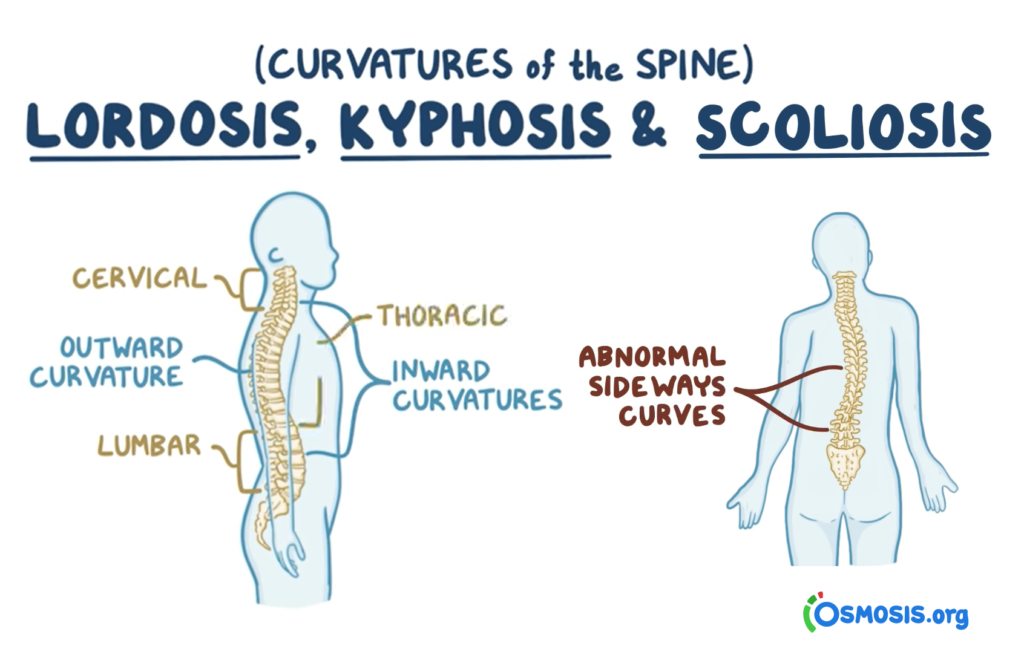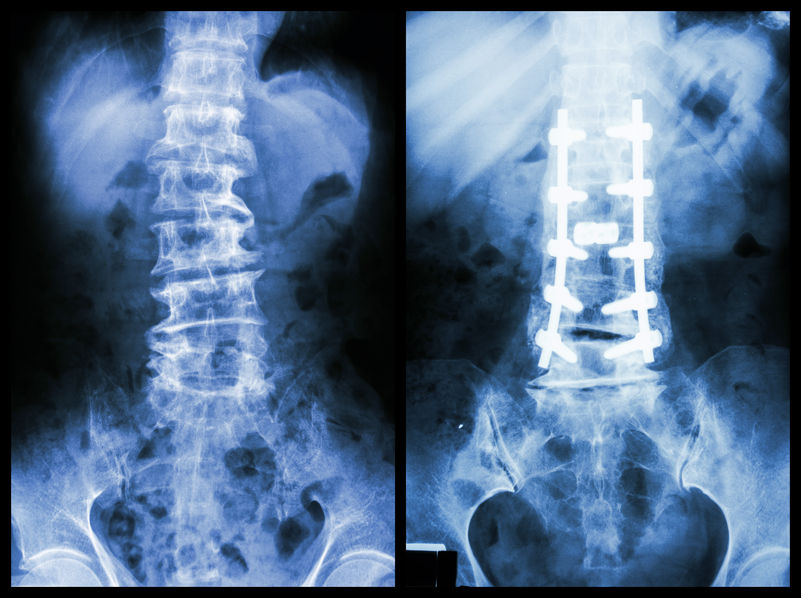What Causes Scoliosis of The Spine?
Dana is a thirteen-year-old girl living in Roseland, New Jersey. Recently, she went shopping with her mom Amy, at the Livingston Mall, getting ready for the spring season. They went through some tops, bottoms, and even a formal dress for an upcoming family wedding. Dana tried on one specific dress from a top brand designer which happened to look amazing on her. While she was looking at herself from every angle in the mirror, Dana noticed that the personal shopper was discussing something of concern with her mother. On the way back home from the mall, Dana asked, “What were you discussing with the lady in the store?”. At first, Amy tried to avoid answering, but the girl was simply not letting go. With that she responded, “The lady who was helping us was telling me that your shoulders are uneven, and we might need to alter the dress to make it look just right”. Dana and her mom apparently were quite aware of this issue, but never actually had the wherewithal to get it checked out. In fact, at the last well visit, Amy recalled the pediatrician mentioning something to her about the curvature of Dana’s spine being slightly large. Originally, Dana seemed to have a mild case of scoliosis, but as she was getting older, it became a more severe case of adolescent idiopathic scoliosis.
What is scoliosis and what are the options for treatment?
Prior to explaining the condition, we must first understand the three types of curvatures of the spine, lordosis, kyphosis, and scoliosis. Lordosis refers to the regular inward curvatures of the spine at the cervical and lumbar regions. If you were looking straight, this part of the spine would point in the same direction to which you were looking. Kyphosis on the other hand refers to the outward curvatures of the spine. When facing forward, this part of the spine points to your back side. Here is an easy way to remember, of what Lordosis is. When you are bowing to the Lord, you always bend forward.

Scoliosis is another curvature of the spine, but this type of curve is abnormal. Curved spine scoliosis occurs when the curvature of the spine bends sideways. This means that when you are looking at the back of a person with scoliosis, the spine curves slightly to the right or back. Scoliosis can occur at the cervical, lumbar, and mid-section of the spine.
Idiopathic scoliosis is by far the most common type of scoliosis, as it is found in three percent of adolescents. In fact, it’s eight times more common in girls versus boys. Other types of scoliosis include, neuromuscular scoliosis, which occurs in people that don’t have control over their muscles, and congenital scoliosis, which is a type of scoliosis the one is born with, as per the spine not being fully developed.
Treatment for Scoliosis in Child
Traditional treatments for mild cases include bracing and in more severe cases, surgery. With the advance in spinal medicine two other treatments have become popular due to their non-invasive approach, The Schroth Method, and WCR brace therapy or better known as the Rigo-Chêneau Brace, invented by Dr. Emanuel Rigo and Dr. Jacques Cheneau. Each of these therapies have been proven to correct the scoliosis with little to no discomfort. Being that these new treatments have come to the market, parents have more options than ever when treating scoliosis. Only in more severe cases will surgery be required. It’s best to go with the non-invasive approach prior to considering surgery.
Scoliosis Spine Surgery
In cases where the Cobb angle is forty to forty-five degrees, doctors will recommend surgery to straighten the spine. The most common type of scoliosis surgery is called spinal fusion. Surgeons will connect two or more of the vertebrates together in order to straighten the spine. The surgery is meant to keep the spine in its natural position getting rid of the abnormal curve to either the right or the left. When a scoliosis patient is treated with surgery, it may result in the limitation of motion of the spine and possibly other lifelong consequences.

Some teens who cannot handle the non-invasive treatment options will elect for surgery to simply fix the problem once and for all. This may be due to them being frustrated with their appearance, not being able to show up to therapy, and discomfort of wearing a scoliosis brace. Keep in mind that these adolescents find themselves in a Western culture that promotes apparel showing more flesh, and that makes the impact of scoliosis that much greater on them.
How Common Is Scoliosis?
The good news is that scoliosis is quite common and very often people live with it without even knowing about it. In fact, three-million cases are diagnosed each year with and less than 1%, are treated with surgery. Over the course of a decade, close to 30,000,000 cases are diagnosed to which most receive absolutely no treatment at all. If their child is in pain or not content with their appearance, parents should get their child evaluated by a scoliosis specialist. Next time take a close look at your child’s spine and see if an abnormal curvature is apparent.
Celebrities with Scoliosis
Many celebrities have led successful careers with the effects of scoliosis. Some of these celebrities include Elizabeth Taylor, Sarah Michelle Gellar, and Jack Brooksbank or the better known Princess Eugenie of York, a member of the British Royal family. Princess Eugenie is the daughter of Prince Andrew, Duke of York, and Sarah, Duchess of York. She by far has the most public appearances and one can take note that one of the princess’s shoulders was slightly elevated. At 12 years of age, she underwent spinal fusion surgery at the Royal National Orthopaedic Hospital in London. In a recent photograph with her father Prince Andrew, the shoulder imbalance is practically unnoticeable. Regardless, people with scoliosis live normal lives, both before and after treatment.

What Happens If You Don’t Fix Scoliosis?
People with a mild case of scoliosis, may ignore the condition because it plays no negative effect on their lifestyle. Here is a comparison of two girls, one with a mild case and the other with mild to severe. Scoliosis severity is determined by the Cobb angle in degrees. This shows the doctor how abnormal the spinal curvature is. Anything less than twenty degrees is considered mild while anything above twenty and under forty is mild to severe. Anything above forty would require surgery regardless of patient choice. Below is a parable of two girls that did not treat their scoliosis that gives a glimpse of what can happen.
Lidia was a fourteen-year-old girl who was diagnosed with mild scoliosis. The bend was at the lumbar area of the spine and the Cobb angle measured seventeen degrees. Her mother decided that if it didn’t affect her physically or socially there would be no reason to treat her. Lidia is now thirty-one years old and is married with four beautiful children. On occasion she struggles with sciatic pain in her lower back but can deal with it. Overall the result of not treating scoliosis did not impact her life greatly.
Sylvia on the other hand, was diagnosed with mild scoliosis but had a Cobb angle of twenty-seven degrees at age twelve. The scoliosis progressed and reached a max curve of thirty-two degrees at age sixteen. During the summer when she turned eighteen, she registered for a life-guarding course. Finally, when she received her certification a group picture of all the new lifeguards was taken. Sylvia sent the image to her mother anticipating receiving congratulations of some sort. She got the congrats, but her mom also noticed how her shoulders were significantly misaligned.
Final Words
When a parent first gets word that their child has scoliosis, there is no need to panic. It’s common for adolescents to see a slight curvature in the spine, you just want to keep a close eye on it to make sure that it does not worsen. The best would be to get evaluated by someone who specializes in treating scoliosis. They may tell you that the degree if the curve is fine and there is no need for therapy. In other cases, the scoliosis specialist may have you go for an x-ray to make sure that as the child grows it does not become more pronounced. If the curve is indeed abnormal, they might recommend brace or Schroth therapy. If the scoliosis is severe, they may send you for an evaluation to a scoliosis surgeon. Keep in mind that if you are directed to a surgeon only less than 1% get treated with surgery. In a worse case scenario, if surgery is recommended, you are in good company with famous celebrities like Princess Eugenie of York. It’s nothing to be embarrassed about it’s just part of growing up. Sometimes the spinal curvature worsens, while other times it does not. For those who have a straight spine, take a moment to be thankful for a straight set of shoulders.


